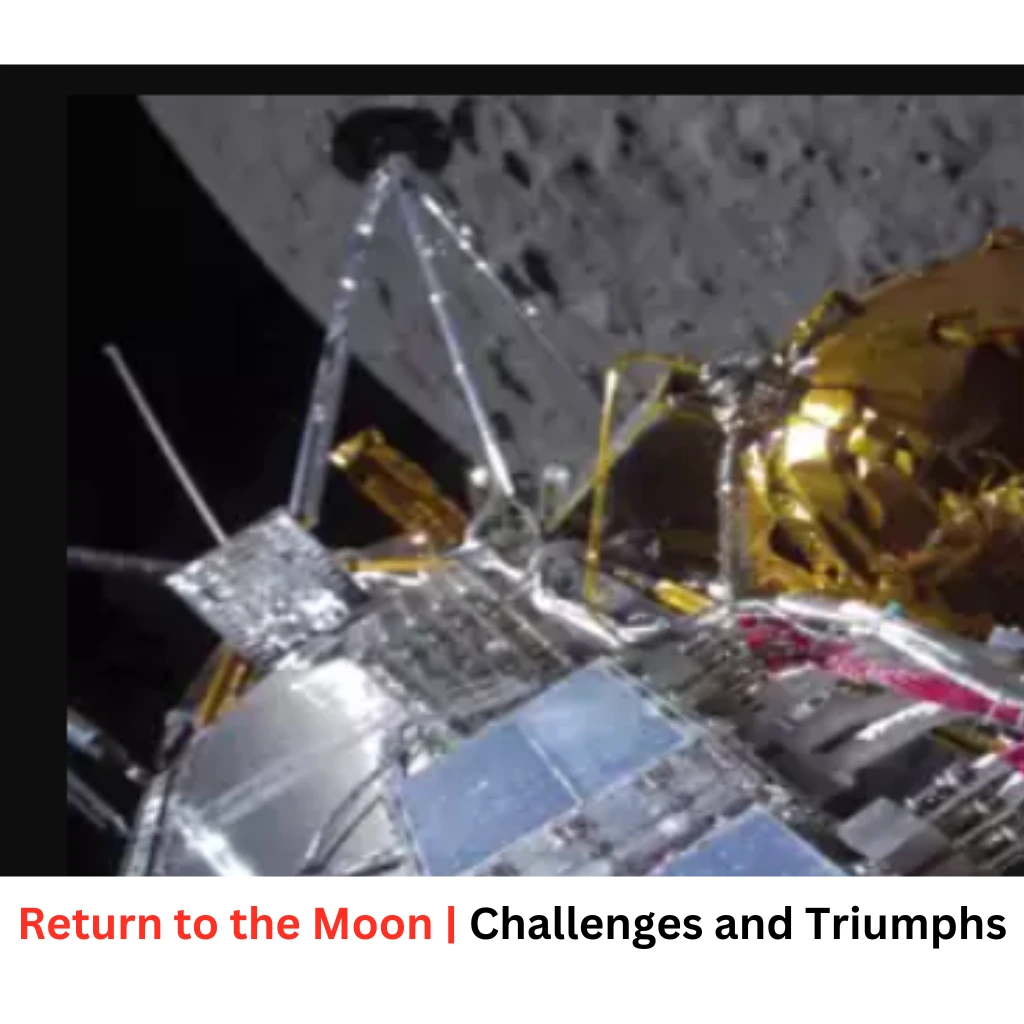Since 1972, the United States of America has not been able to return to the moon surface. The latest accomplishment of Intuitive Machines Inc. is a key milestone in the field of space exploration. The successful landing, on the other hand, was not without its difficulty.
Challenges in Landing on the Moon
There are a lot of obstacles that spacecraft must overcome in order to navigate the lunar environment. Developing spacecraft that are able to resist the harsh conditions of the moon’s surface is a challenging endeavour because the moon’s surface is unforgiving.
In addition, the absence of practical experience in lunar exploration in recent times added to the challenges that private enterprises were already facing.
Nasa’s Role in Lunar Exploration
The Artemis program at NASA rekindled interest in lunar exploration with the objective of establishing a human presence on the moon that is capable of being maintained over time.
NASA’s goal is to achieve its lunar objectives by leveraging commercial capabilities, and one way it plans to do this is by forming collaborations with private companies such as intuitive Machines.
Technical Challenges
As spacecraft travel through the vacuum of space, they encounter extreme temperature fluctuations and cosmic radiation, which endangers both the hardware and the electronics of the spacecraft. Furthermore, the gravitational anomalies and lack of atmosphere on the moon make landing procedures more challenging, necessitating the use of precise navigation and autonomous control systems.
Autonomous Landing
Because of the delays in communication and the requirement for changes to be made in real time during descent, the autonomy of lunar landers is of the utmost importance.
It is clear that autonomous landing on celestial planets is a challenging endeavour, as evidenced by the failures in navigation systems that occurred during the mission of Ispace.
Hardware and Software Failures
Instances of hardware and software failures, such as the one that occurred with the Smart Lander at JAXA, call attention to the precarious nature of lunar missions.
Even if the landings are successful, there is still the possibility that technical malfunctions will damage the mission objectives and operating capabilities.

Special Considerations for South Pole Landing | Return to the Moon
The South Pole landing site presented intuitive machines with new obstacles, which required the company to make substantial efforts in terms of both planning and engineering.
In addition to adding scientific and practical significance, the availability of prospective water resources in this region makes missions targeting this region more important.
Significance of Successful Landing
Not only does the accomplishment of intuitive machines serve as evidence of the potential of commercial space operations, but it also lays the path for future endeavours to explore the moon. The successful landing ushers in a new age of lunar exploration, which has ramifications for the exploitation of resources and the conduct of scientific study, among other things.
Conclusion
It is important to note that the successful landing of the spacecraft belonging to intuitive machines represents a significant advancement in lunar exploration.
This accomplishment also serves as a reminder of the collaborative efforts made by both public and private organizations to advance space research.
The obstacles that were conquered and the lessons that were learned will serve as a roadmap for future trips to the moon and beyond. This is happening as humanity begins a new chapter of lunar exploration.
FAQs:
Why is landing on the moon challenging for spacecraft?
Lunar terrain and environmental conditions pose significant challenges for spacecraft design and navigation.
What role does Nasa play in lunar exploration?
Nasa spearheads initiatives like Artemis to facilitate human and robotic exploration of the moon, collaborating with commercial partners for mission success.
How do spacecraft navigate autonomously during lunar descent?
Autonomous navigation systems utilize sensors and pre-collected data to make real-time adjustments, ensuring a safe landing.
What are the implications of water discovery on the moon?
Water resources on the moon hold potential for sustaining future lunar missions and supporting activities such as life support and rocket propellant production.
What does the success of Intuitive Machines’ landing mean for future space exploration?
The successful landing by Intuitive Machines demonstrates the viability of commercial space ventures and sets the stage for expanded lunar exploration efforts.
You may read
Android 15 : Unveiled and Optimized | Google and Samsung Fortify Partnership
Android 15 : Unveiled and Optimized | Google and Samsung Fortify Partnership





